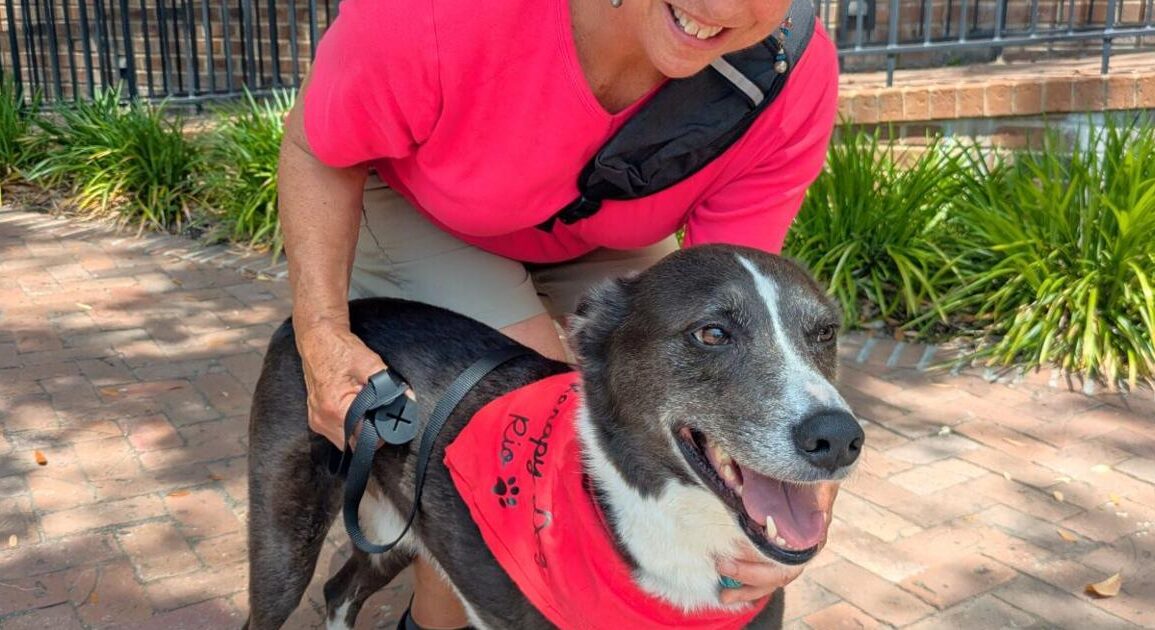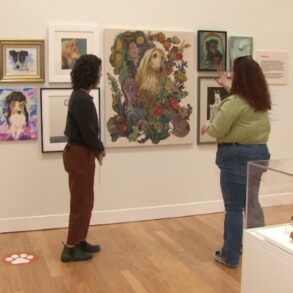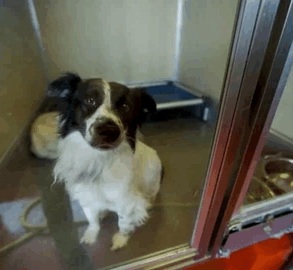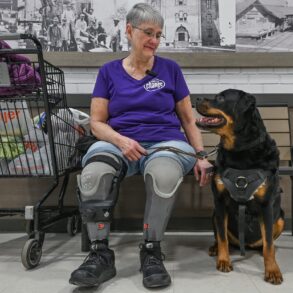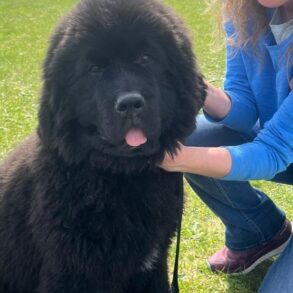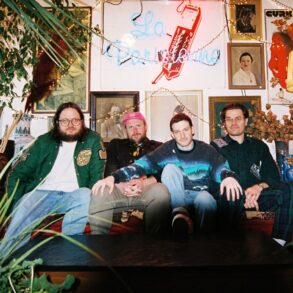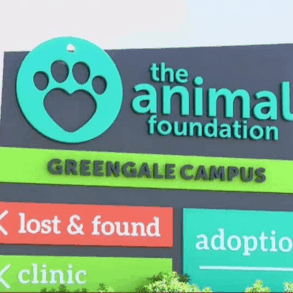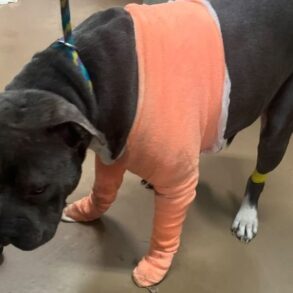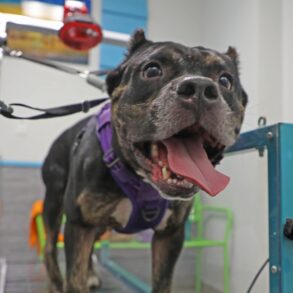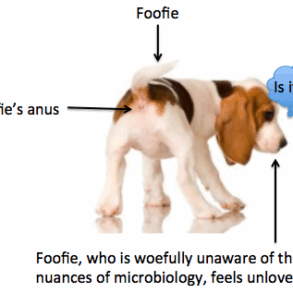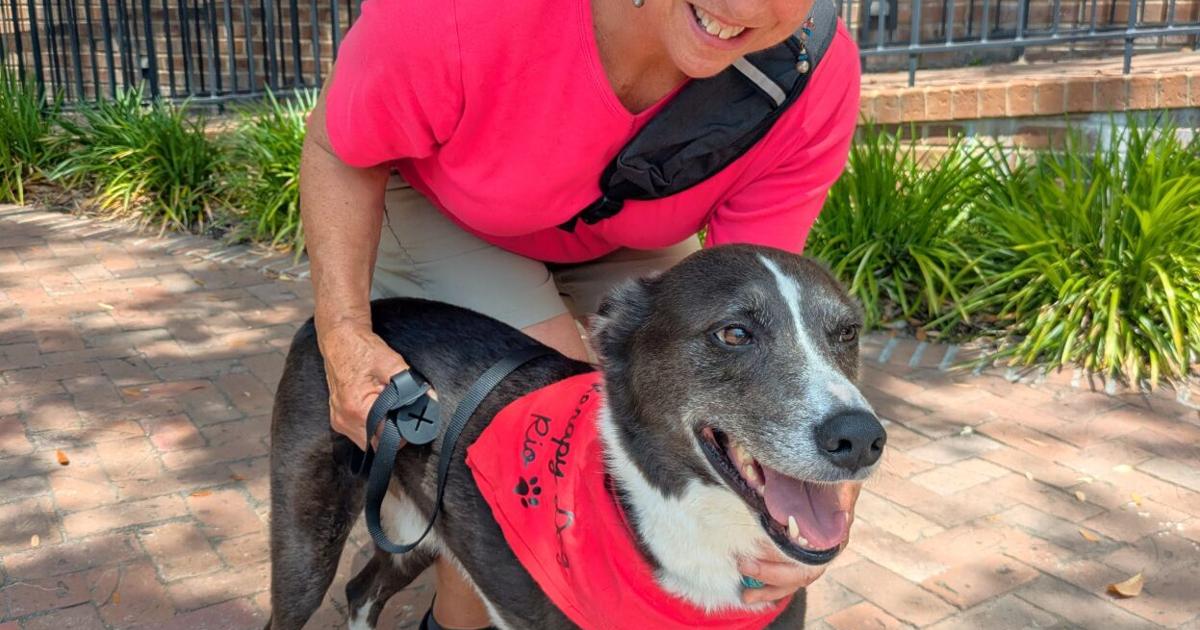
It’s finals week at the College of Charleston and that means three things — late nights at the library, tons of coffee and puppies!
It’s “therapy dog” time; no better relief from the stress of studying.
But what exactly is a therapy dog, and why do we find ourselves feeling so much better after turning to these lovable, furry heroes when life feels overwhelming?
It turns out, there is a good scientific reason for it.
The therapeutic abilities of dogs
The relationship between dogs and humans goes back almost 15,000 years ago when wild wolves were domesticated in East Asia.
As humans evolved, dogs became more integrated into daily life and less essential for survival.
In the Civil War, Sallie, a Staffordshire Bull Terrier, provided emotional comfort to injured soldiers.
Fast forward to the 20th century, when dogs became recognized as service animals, trained to assist with a wide range of physical and mental disabilities, from conditions like PTSD to visual impairments.
The American Heart Association even released research endorsing dog ownership for its role in reducing the risk of cardiovascular disease.
And now as mental health awareness grows, dogs are increasingly recognized for their therapeutic benefits for people with anxiety and depression.
Great stress relief from finals
Rachael McNamara, director of the Office of Student Wellness and Wellbeing, said therapy dog events have become super popular among students where they have been enjoying the dogs during midterms and finals for about a decade.
“Petting a dog is nothing like reading a textbook or studying, so it gives students a great break,” said McNamara.
Research shows that when humans and dogs interact, whether through petting or cuddling, the hormone oxytocin, aka the “feel-good” hormone, is released.
And our furry friends get the same happy rush, so it’s a win-win.
Healing power of dogs
Dogs aren’t just great for students stressed during finals. They can be very useful to patients stressed about their time in the hospital, too.
Charleston’s PAWS program at MUSC partners with volunteers and their certified therapy dogs to bring patients some love at the hospital.
By integrating therapy dogs into individual treatment plans, PAWS provides unique comfort to help patients in their recovery process — both mentally and physically.
“MUSC understands that this is a very innovative but successful way to help patients,” said PAWS program coordinator Cathy Bennett. “The dedicated volunteers who train and offer their animals for the PAWS program have helped put a spotlight on what these dogs are capable of doing which has taken us into different realms of possibilities that years ago, people would have never thought about.”
So what is it about the bond between humans and dogs that makes it so effective in helping people during treatment?
It triggers brain responses similar to those seen between mothers and their children, activating regions associated with reward, emotion and affiliation.
Researchers have discovered that the mental boost and pain relief provided by therapy dogs make patients feel “significantly less burdened by the disease in their daily lives,” and that “therapeutic-dog sessions had a large effect on patients’ quality of life.”
In other words, “pure, unconditional love — taught by the dog to the human,” Bennett added.
‘More therapy dogs, please’
The “puppy therapy” event at CofC is always such a positive experience that McNamara said they are trying to change the campus pet policy to allow more puppy visits.
The CofC women’s soccer team welcomed Truman, a golden retriever therapy dog from MUSC, to help the student-athletes cope with the stress that comes with high-level competition in college sports.
And Bennett believes the PAWS program at MUSC is only going to grow to help more patients.
“We are super excited,” Bennett said.
Part of expanding the offerings means getting more volunteers and their dogs involved.
“If you can zero in on that dog’s talent and recognize that this dog truly has a gift, then you share that with people,” said Bennett.
Bennett explained that these services bring a sense of purpose to the volunteers, their animals and the patient — fostering a truly mutual and beneficial experience.
“It is such a connection to purpose for you,” Bennett said, “because you’re recognizing that just those few minutes with a dog can change a person’s life from an emotional perspective.”
Editor’s Note: A special collaboration with the College of Charleston Department of Education.
This post was originally published on this site be sure to check out more of their content.




